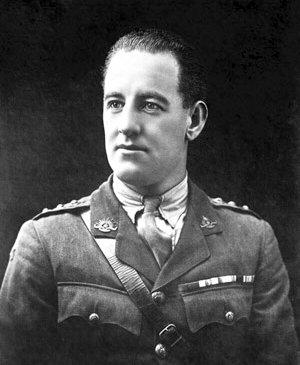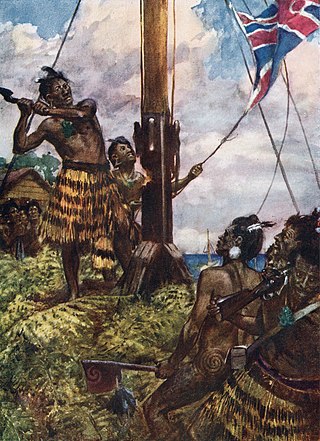
William Light, also known as Colonel Light, was a British-Malayan naval and army officer. He was the first Surveyor-General of the new British Province of South Australia, known for choosing the site of the colony's capital, Adelaide, and for designing the layout of its streets, six city squares, gardens and the figure-eight Adelaide Park Lands, in a plan later sometimes referred to as Light's Vision.

Sir Joseph Edgar Boehm, 1st Baronet, was an Austrian-born British medallist and sculptor, best known for the "Jubilee head" of Queen Victoria on coinage, and the statue of the Duke of Wellington at Hyde Park Corner. During his career Boehm maintained a large studio in London and produced a significant volume of public works and private commissions. A speciality of Boehm's was the portrait bust; there are many examples of these in the National Portrait Gallery. He was often commissioned by the Royal Family and members of the aristocracy to make sculptures for their parks and gardens. His works were many, and he exhibited 123 of them at the Royal Academy from 1862 to his death in 1890.

Windsor railway station is a commuter railway station on the Sandringham line, which is part of the Melbourne railway network. It serves the south-eastern suburb of Windsor, in Melbourne, Victoria, Australia. Windsor station is a ground level unstaffed station, featuring two side platforms. It opened on 19 December 1859.

St Kilda Road is a street in Melbourne, Victoria, Australia. It is part of the locality of Melbourne which has the postcode of 3004, and along with Swanston Street forms a major spine of the city.

Albert Jacka, was an Australian recipient of the Victoria Cross, the highest decoration for gallantry "in the face of the enemy" that can be awarded to members of the British and Commonwealth armed forces. Jacka was the first Australian to be decorated with the VC during the First World War, receiving the medal for his actions during the Gallipoli Campaign. He later served on the Western Front and was twice more decorated for his bravery.

Major General Sir Neville Reginald Howse, was an Australian Army officer, medical doctor, and politician. He was the first Australian recipient of the Victoria Cross (VC), the highest decoration for gallantry "in the face of the enemy" that can be awarded to members of the British and Commonwealth armed forces.

Melbourne is Australia's second largest city and widely considered to be a garden city, with Victoria being nicknamed "the Garden State". Renowned as one of the most livable cities in the world, there is an abundance of parks, gardens and green belts close to the CBD with a variety of common and rare plant species amid landscaped vistas, pedestrian pathways, and tree-lined avenues, all managed by Parks Victoria.
The St Kilda-Windsor railway line was a short-lived section of railway that linked the isolated Windsor to Brighton section of the Melbourne railway network to the city. The branch line fell into disuse when an alternative route was built between Windsor and Richmond stations.

Denstone College is a co-educational, private, boarding and day school in Denstone, Uttoxeter, Staffordshire, England. It is a Woodard School, having been founded by Nathaniel Woodard, and so Christian traditions are practised as part of College life. It is a member of the Headmasters' and Headmistresses' Conference.
Australian non-residential architectural styles are a set of Australian architectural styles that apply to buildings used for purposes other than residence and have been around only since the first colonial government buildings of early European settlement of Australia in 1788.

There are 14 Grey Streets in metropolitan Melbourne, but by far the best-known is Grey Street in St Kilda, once a grand residential street but now with a reputation as a centre of prostitution.

Ephraim Laman (Lamen) Zox was an Australian financier and politician.

The Ballarat Football Netball Club, nicknamed the Swans is an Australian rules football and netball club. The football squad currently competes in the Ballarat Football League in the Ballarat region of Victoria, Australia.
Hudson and Wardrop was formed by Philip Burgoyne Hudson and James Hastie Wardrop MM in 1919. Hudson was born in Auckland, New Zealand on 6 February 1887 and died in 1952 at the age of 64. James Wardrop was born in 1891 and died on 25 July 1975 at the age of 84. Both architects were veterans who served in the war and moved on to study under Charles D'Ebro. The Australian established architects are well known for their designs of chapels, universities, colleges, factories, hotels, and public monuments in Melbourne, the Shrine of Remembrance being the most prominent out of the few. They were also responsible for the compiling of The National War Memorial of Victoria: the first brochure on the first permeated design.

The Battle of Kororāreka, or the Burning of Kororāreka, on 11 March 1845, was an engagement of the Flagstaff War in New Zealand. Following the establishment of British control of the islands, war broke out with a small group of the native population which resulted in the fall of the town of Kororāreka, present day Russell, to Māori warriors.

The Prahran Telegraph was a weekly newspaper published from 1860 to 1930 in Prahran, an inner-suburb of the city of Melbourne, Australia. No copy pre-1866 is known to have survived. From 1866 until December 1888, the paper was called the Telegraph and St Kilda, Prahran and South Yarra Guardian. From January 1889 until 7 December 1902, the paper was known simply as the Prahran Telegraph. From 13 December 1902 the banner head read the Prahran Telegraph, with which is incorporated the St Kilda Advertiser and the Malvern Argus.
Henry James Watson McPetrie was a former Australian rules footballer who played for the St Kilda Football Club in the Victorian Football Association (VFA) and the Carlton Football Club in the Victorian Football League (VFL).
The Donkin Heritage Trail is a 5 km self-guided walking trail along the old hill of central Port Elizabeth, Eastern Cape, South Africa. The Donkin Heritage Trail is named after the acting Governor of the Cape Colony, Rufane Shaw Donkin.

Prince Alfred Square is a 1.5-hectare (3.7-acre) park on the northern side of the Parramatta River in the central business district of Parramatta. It is one of the oldest public parks in New South Wales and is listed on the New South Wales State Heritage Register. St Patrick's Cathedral is located directly opposite the square to the west.
St Kilda Artillery Orderly Room and Drill Hall is a heritage-listed military installation at 10 Chapel Street, St Kilda East, Victoria, Australia. It was added to the Australian Commonwealth Heritage List on 22 June 2004.
























